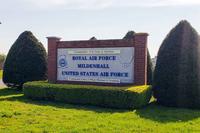 When asked what he thought about the order from Congress to stop creating service-specific camouflage patterns, the senior enlisted adviser to the chairman of the Joint Chiefs of Staff said U.S. forces look like an "American Baskin Robbins" in the combat zone.
When asked what he thought about the order from Congress to stop creating service-specific camouflage patterns, the senior enlisted adviser to the chairman of the Joint Chiefs of Staff said U.S. forces look like an "American Baskin Robbins" in the combat zone.
Marine Corps Sgt. Maj. Bryan B. Battaglia was speaking at a town hall meeting Aug. 5 at Marine Corps Base Hawaii when Marine 1st Sgt. William Banks asked if the military would adopt a universal combat uniform.
"Are we in fear our forces are going to lose our cultural identity with the addition of a universal uniform?” Banks asked Battaglia according to a Marine release on the meeting.
Battaglia responded saying the different uniforms in the combat zone are confusing for allies. He then compared the combination of uniforms to the popular ice cream chain known for its 31 flavors slogan.
The senior enlisted adviser then hinted that the service-specific camouflage uniforms might survive for garrison wear.
"The idea is to find a universal uniform for the battlefield, whereas branch garrison uniforms will most likely remain the same,” Battaglia said according to the release. “Talks concerning a distinct universal uniform are currently a work in progress.”
The debate over a universal camouflage pattern has come since members of the House Armed Services Committee voted in June to require the services to settle on a joint combat uniform by 2018 and restrict the creation of any new camouflage patterns unless it’s designed for a joint uniform.
Frustrated with the millions of dollars spent to buy new combat uniforms with service-specific camouflage patterns, two Illinois Congressmen proposed an amendment in the 2014 defense budget ordering the Pentagon to return to the days when the patterns were joint.
Of course, it's ironic that a Marine official is the one calling U.S. forces an "American Baskin Robbins" considering the Marine Corps is the service that started the trend of service-specific camouflage patterns. The Marine Corps fielded the Marine Corps Combat Utility Uniform in 2002 in which the service stitched the Marine Corps symbol into the pattern.
Stitching the symbol led each service to design their own camouflage pattern as Army, Air Force and Navy officials didn't want their troops wearing the Marine Corps symbol. The Air Force developed the Airman Battle Uniform in 2002 and the Army developed the Army Combat Uniform in 2003.
Service officials have since been criticized for the millions of dollars spent to develop these patterns for each service rather than settling on one to be worn across the military. In 2012, the Government Accountability Office released a report saying the services have wasted millions in the effort.
Army officials were set to announce a new service-wide camouflage pattern this summer before the requirement from Congress that all patterns be designed for joint use. There has not been an announcement when, or if, the new pattern will be fielded since the June vote by the House Armed Services Committee.








